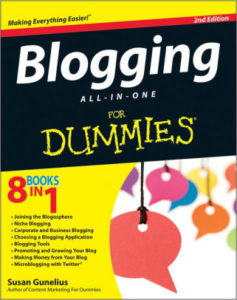Companies Use Blog Content Writing to Get Real

Just why do companies blog? Susan Gunelius, author of Blogging All-in-One for Dummies, offers a list of reasons:
- to build brand awareness
- to network with other businesses and experts
- to build relationships with existing and potential customers
- to boost sales
- to communicate marketing messages
- to learn more about their customers
- to manage reputation
- to set up expectations for the customer experience
My favorite on the Gunelius list was this one:
“To seem real and human in the consumer’s eye rather than as an untouchable entity”
As a blog writer and blogging consultant, I find that “getting real” through online content is the real goal – and the real challenge. I explain to business owners that putting up fresh blog posts about new products or recent accomplishments tells people that you are in the game. Blog posts help demonstrate that you care about quality in all dimensions of your business.
One interesting perspective on the work we do as professional bloggers is that we are interpreters, translating clients’ corporate message into human, people-to-people terms. That’s the reason I prefer first and second person writing in business blog posts over third person “reporting”. I think people tend to buy when they see themselves in the picture and when can they relate emotionally to the person bringing them the message.
“Do you want a tone (for your blog) that is professional? Humorous? Journalistic? Personal diary? Choose one and then inject your own personality into that style,” Gunelius advises.
Getting down and human” in business blogs is so important that it becomes a good idea for a business owner and professional to actually write about past mistakes and struggles. And, I tell entrepreneurs, whether you propose to do the blog writing yourself or collaborate with a professional blog content writing partner, the very process of deciding what to put in the blog is one of self-discovery. In a sense, blogging is a way to “get real” with yourself!
To be sure, marketing, boosting sales, and reputation management are all worthy goals. The over-riding goal, as Susan Gunelus so aptly puts it, is “to seem real and human in the consumer’s eye!”





Follow us online!